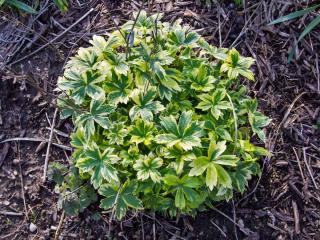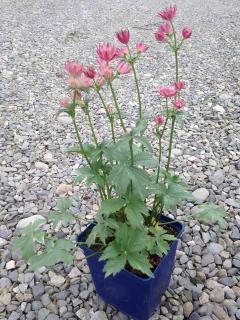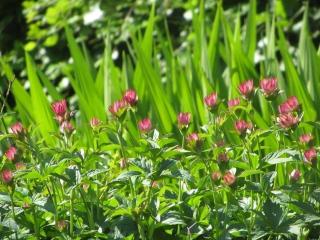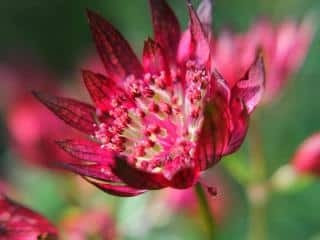

The star of mixed borders, Astrantia is a pretty flower that offers a long and spectacular bloom from May to September.
Key Astrantia facts:
Name: Astrantia
Family: Apiaceae
Type: perennial
Height: 1.5→3 feet (0.5→1 meter)
Exposure: part shade
Soil: fresh and drained
Foliage: deciduous – Blooming: spring, summer
Hardy, Astrantia tolerates everything except drought. Soil that stays fresh is ideal for this beautiful perennial.
You can grow astrantia in the sun, as long as the soil stays fresh. Otherwise, it likes partial shade and supports light permanent shade. Plant in the spring, after the last frost. In the south of France, people prefer planting in the fall.
 Maintain spacing of 12 to 16 inches (30 to 40 cm) between each plant
Maintain spacing of 12 to 16 inches (30 to 40 cm) between each plant
Indeed, it appreciates a deep and fresh soil, which is often lacking with potted plants.
If you still want to try it, choose a large-sized pot, place it in semi-shade and be rigorous with your watering.
Astrantia self-seeds spontaneously in the garden. To avoid this, just cut off dried flowers as they appear or start wilting. However, we advise against using astrantia seeds for sowing, because they rarely match the beauty of the mother plant.
It is better to divide the clump, as soon as the plant is 3 years old. Proceed in the spring by uprooting the plant with a broadfork. Divide the clump with a spade and replant the pieces in various places. Remember to give a little natural fertilizer at the time of replanting.

Like most perennials, Astrantia deserves trimming once a year. At the end of winter, in March, it’s suitable to cut back all the stems to about 4 inches (10cm) from the ground. Vegetation will then start a new season that’ll be rich in flowers.
If you decide to grow Astrantia in a pot, you need to be strict about watering. It’s best to set up an automatic watering system. You can also rely on ollas, which are porous terra cotta waterers. When filled with water, these small containers slowly release the precious liquid, keeping the soil always fresh. Even more so than you would do if planted in the ground, think about enriching your potting soil with fertilizer at the start of blooming and during summer.
Young plants sometimes get nibbled by slugs. You need to protect them using a ring of wood ashes, coffee grounds, or eggshells. Apart from that, this plant is not susceptible to pests and diseases.
Don’t trust the delicate appearance of its pretty umbel flowers, Astrantia is a very hardy plant. It easily tolerates temperatures below 5°F (-15°C). You can certainly grow it at high altitudes, in a mountain garden.
